(Dan Tri) - Expert Brandon N Sinkovic commented that Vietnamese students' English proficiency is low because they "study" but do not use it.
Brandon N Sinkovic is currently the Academic Director of an English language center and has 9 years of experience teaching English in Vietnam. He believes that the biggest problem preventing Vietnamese students from acquiring English is being forced to approach it as a subject rather than a language.
"You learn about English in class, but there are hardly any opportunities to use the language as a communication tool.
This approach can be likened to a soccer player who learns how to play by watching the game on TV, but never steps onto the field. How can one learn a language without ever using it?”, said Brandon.
According to Cambridge's CEFR (Common European Framework of Reference) figures for language teachers, students need about 200 hours of guided instruction in the target language to advance one CEFR level.
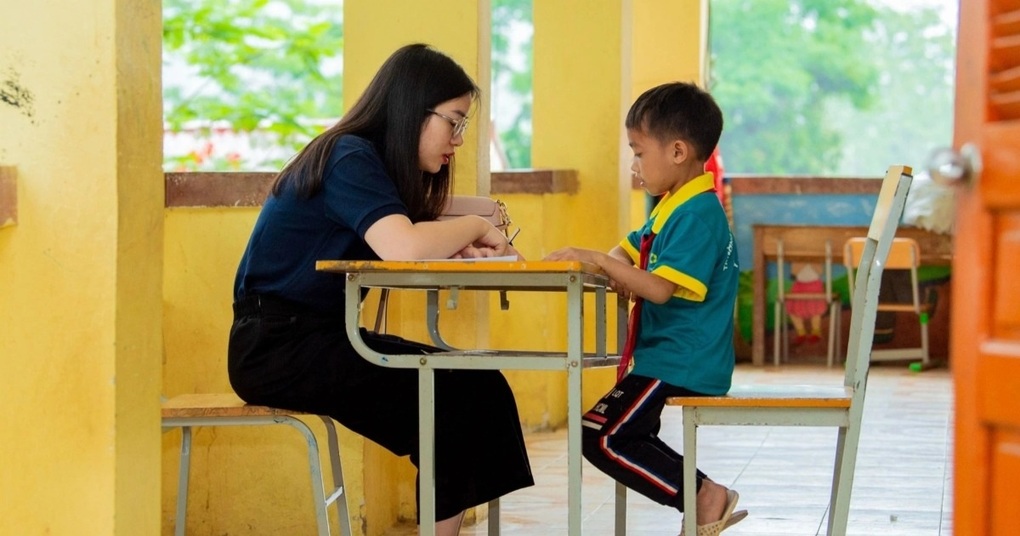
Marie Curie School teachers teach free formal English to students in Meo Vac (Photo: Marie Curie School).
With limited hours of study in schools and a lack of language environment, most Vietnamese students do not have enough time to be exposed to English to achieve the level requirements as outlined in the roadmap above.
Another problem that Mr. Brandon pointed out is that students have few opportunities to speak or write. In a class of 40-50 students, speaking practice often turns into a lecture, unintentionally causing students to feel anxious and afraid of speaking.
It is also common for students to be placed in English classes that are not appropriate for their level, especially in large classes where students of different levels are studying the same curriculum.
This leaves advanced students feeling bored and stagnant, while weaker students feel overwhelmed and discouraged.
The English center model can solve the problems of teaching English in schools but has problems with cost and accessibility, especially for students living far from big cities.
One solution that many schools have implemented is to collaborate with reputable English centers to bring the center's modern curriculum into the school to improve teaching quality and save costs. However, Mr. Brandon admitted that although the cost is cheaper than the center, it is still a number that not all students can access.
Need "4 houses" to work together to improve the quality of English teaching and learning
At the conference to implement a plan to narrow the gap in foreign language teaching quality between inner city and suburbs held on the morning of January 9, Mr. Pham Quoc Toan - Deputy Director of the Hanoi Department of Education and Training - said that the results of the high school graduation exam in foreign languages in Hanoi for many years have been a saddle-shaped graph with 2 peaks.
One peak of the graph is at 8, 9 points and another peak is approximately 5 points. This shows that there is a big gap in English learning between inner-city and suburban students.
To pull the two peaks closer together, aiming to become a single-peak bell-shaped graph, the capital's education and training sector needs to synchronously implement many solutions.
In particular, the Department emphasizes on innovating teaching methods, deploying advanced learning software, using artificial intelligence (AI) to support self-study, organizing online classes with native teachers, encouraging students to self-study foreign languages through technology platforms, promoting cooperation and sharing of learning resources between teachers in and outside the city, investing in facilities and modern technological equipment for teaching and learning foreign languages in schools...
According to the plan, from January, the Hanoi Department of Education and Training will focus on piloting the model of twin schools between an inner-city school and a suburban school, building model classrooms, and the "Self-study Month" movement to encourage students to self-study foreign languages. From June, this model will be expanded to the entire city.
The ultimate goal is to ensure that suburban students have access to the same quality of education as inner-city students.
Ms. Nguyen Phuong Lan - General Director of EMG Education - the unit accompanying the Department of Education and Training of Ho Chi Minh City in implementing the integrated English program according to project 5695, affirmed that the gap in education in general and English in particular between inner-city and suburban students is not a problem unique to Hanoi.
Drawing on experience from Project 5695, Ms. Lan emphasized the principle of "4 houses" in narrowing the above gap. That is the close cooperation between the state, schools, businesses and learners.
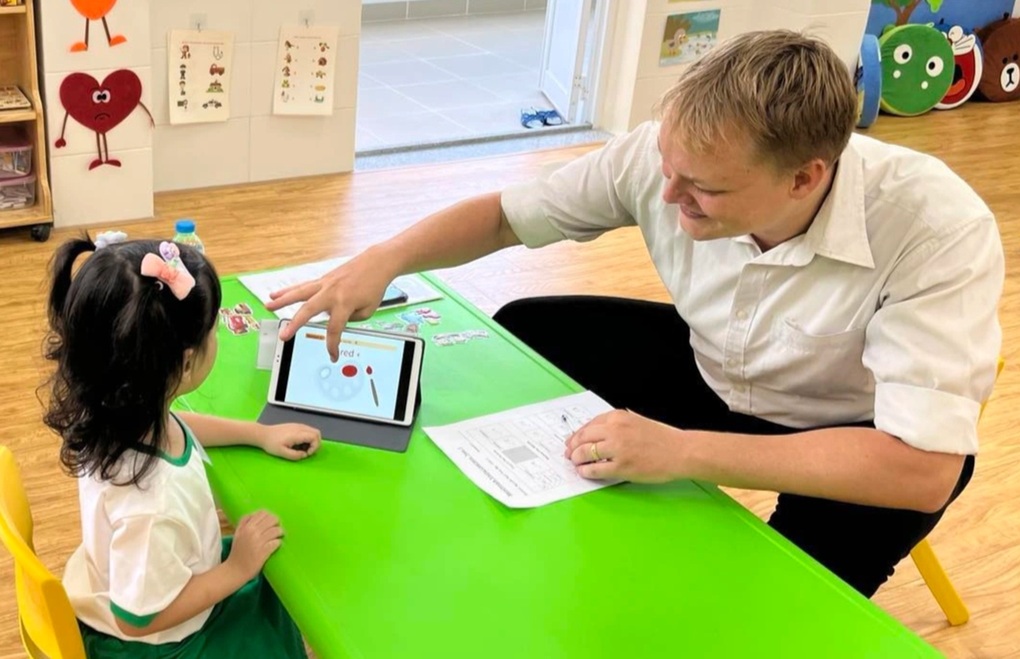
An English lesson under the pilot program to introduce English to preschool children in Ho Chi Minh City (Photo: EMG).
According to Ms. Lan, socialization in English teaching is an important direction to improve the quality of English teaching and learning. Because the potential of enterprises helps provide solutions and resources in teacher training, innovate teaching methods for English teachers as well as bring technology applications in English teaching and learning to schools.
Currently, popular learning software in schools in Ho Chi Minh City such as LMS systems, E-learning, AI applications, digital learning materials... are all investment resources from businesses.
Ms. Lan also emphasized the need for a technology strategy in English learning, such as bringing AI tools into schools to reduce the burden on teachers and provide more and better learning opportunities for students.
According to the Hanoi Department of Education and Training, in the 2025-2026 school year, the city will have 2.3 million students, accounting for more than 1/10 of the country's total. The estimated number of teachers is 130,000.
Every year, the number of students in Hanoi increases by 35,000-40,000, of which 30% are students from other provinces.
The desire of the capital's education sector is to break down geographical barriers in learning English, gradually making English the second language in schools.
Source: https://dantri.com.vn/giao-duc/hoc-sinh-viet-nam-hoc-tieng-anh-nhu-cau-thu-hoc-choi-bong-qua-tivi-20250109104128730.htm


![[Photo] Prime Minister Pham Minh Chinh chairs the fourth meeting of the Steering Committee for Eliminating Temporary and Dilapidated Houses](https://vphoto.vietnam.vn/thumb/1200x675/vietnam/resource/IMAGE/2025/5/11/e64c18fd03984747ba213053c9bf5c5a)
![[Photo] The moment Harry Kane lifted the Bundesliga trophy for the first time](https://vphoto.vietnam.vn/thumb/1200x675/vietnam/resource/IMAGE/2025/5/11/68e4a433c079457b9e84dd4b9fa694fe)


![[Photo] Discover the beautiful scenery of Wulingyuan in Zhangjiajie, China](https://vphoto.vietnam.vn/thumb/1200x675/vietnam/resource/IMAGE/2025/5/11/1207318fb0b0467fb0f5ea4869da5517)
![[Photo] National Assembly Chairman works with leaders of Can Tho city, Hau Giang and Soc Trang provinces](https://vphoto.vietnam.vn/thumb/1200x675/vietnam/resource/IMAGE/2025/5/11/c40b0aead4bd43c8ba1f48d2de40720e)


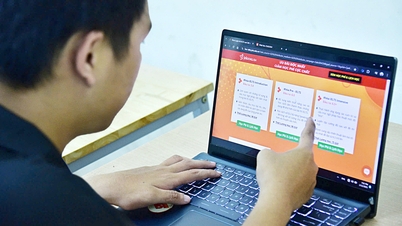









![[Video] Vietnamese primary school students are among the top in Southeast Asia in Math, Reading and Writing](https://vphoto.vietnam.vn/thumb/402x226/vietnam/resource/IMAGE/2025/5/11/12fcdc611db44eeaaa1559054e4c8e9a)






































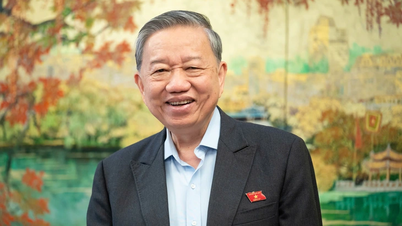






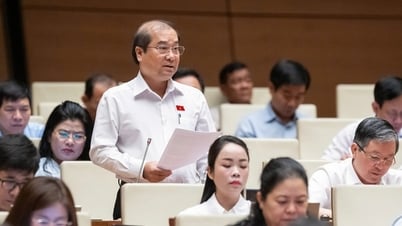








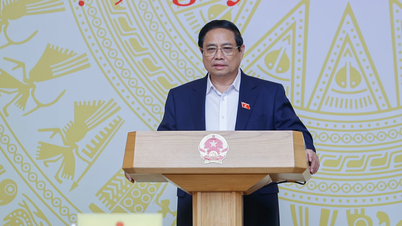

















Comment (0)